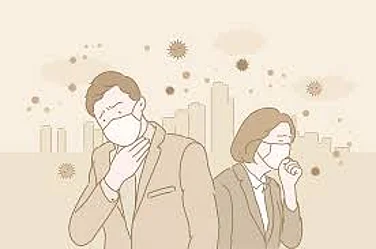As winter looms and the familiar haze begins to settle across northern India, aggravated by stubble burning and vehicular emissions, households once again turn to air purifiers in a bid to breathe easier indoors. But even as the sleek, plug-in gadgets fly off the shelves, it’s also time to question: do they actually work?
A landmark international study has now cast doubt on the real-world effectiveness of most commercial air-cleaning devices, warning that many claims made by manufacturers may not be supported by rigorous scientific evidence at the ground level. The findings come at a crucial time, with pollution levels set to spike and consumer trust hanging in the balance.
Published in the Annals of Internal Medicine, the comprehensive review examined nearly 700 studies conducted between 1929 and 2024 on air-cleaning technologies, including HEPA filters, UV light systems, ionizers, and advanced ventilation mechanisms. Alarmingly, only 9% of the studies assessed whether the devices actually reduced illness in people.
“We were surprised to find that most of the research tested air-cleaning devices in lab chambers, not in real-world settings where people live, work, or go to school,” said Dr. Lisa Bero, professor of internal medicine and co-author of the study.
Researchers at the University of Colorado Anschutz Medical Campus and the National Institute for Occupational Safety and Health (NIOSH), under the U.S. Centers for Disease Control and Prevention (CDC), concluded that the vast majority of studies focus on indirect metrics such as dust levels or microbial presence rather than actual health outcomes.
“Many of these technologies look promising on paper, but we just don’t know if they work in the real world,” said Dr. Amiran Baduashvili, lead author of the study.
More concerningly, certain air-cleaning technologies such as ionizers, plasma-based devices, and some UV-based purifiers were found to emit ozone — a lung irritant known to aggravate respiratory conditions.
“Ozone and other chemicals created by some air-cleaning devices can actually harm the respiratory system, especially in children or people with chronic respiratory illnesses,” cautioned Louis Leslie, senior researcher at the University of Colorado.
Despite these potential health risks, the study found only a limited number of investigations into the harmful byproducts emitted by such devices.
Last year, Union Consumer Affairs Minister Pralhad Joshi, speaking at a World Standards Day event, also criticized air purifier manufacturers for misleading marketing.
"Looking at the Air Quality Index (AQI) on mobiles, people, out of fear, go and buy air purifiers. Air purifiers make such false claims... There is just a fan in it, yet claims are still made," said Joshi, noting that deceptive product claims usually exploit public anxiety and health as well.
Joshi underscored the importance of creating greater consumer awareness, especially as winter nears and air pollution spikes due to stubble burning in northern states.
"I do not blame BIS for this. BIS, in the last few years, has done an exceptionally wonderful job. But both BIS and the Consumer Affairs Ministry, along with consumers, need to create awareness," he said.
India currently enforces over 22,300 product standards, with 94% aligned with international benchmarks such as ISO and IEC, according to Mr. Joshi.
Industry insiders report a dramatic rise in consumer interest. Leading manufacturers report up to a 50% increase in air purifier sales during the period coinciding with deteriorating AQI in Delhi-NCR.
According to market research, the Indian air purifier market was valued at ₹777.75 crore in 2023 and is projected to grow at a CAGR of 16.3% between 2024 and 2032.
Despite the popularity of advanced filtration technologies, experts advise that simple measures remain the most effective in maintaining indoor air quality.
“We’re not saying these technologies don’t work — we’re saying we don’t know enough yet,” clarified Dr. Bero. “Public health decisions should be based on solid, independent evidence.”
Until stronger data is available, researchers recommend low-cost interventions: opening windows for ventilation, regular cleaning, and avoiding sources of indoor pollutants.
“This study highlights the urgent need for better science to guide how we make our indoor environments safer — especially as respiratory infections continue to pose a serious public health threat,” added Dr. Bero.
Indoor air pollution refers to the presence of harmful contaminants within and around buildings, posing serious risks to the health and well-being of occupants. In many cases, indoor air can be more polluted than outdoor air — particularly in modern, energy-efficient structures that are tightly sealed and lack adequate ventilation. Common indoor pollutants include particulate matter (PM), carbon monoxide, volatile organic compounds (VOCs) released from household products, and biological agents such as mold, dust mites, and pet dander.


























